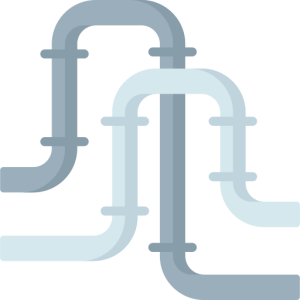Development ‘Pipelines’
What is a ‘pipeline’?
In e-learning development, a development pipeline is a structured framework that outlines the steps involved in creating and delivering e-learning content. It helps manage the process efficiently and ensures the quality of the final materials.
The pipeline includes stages like content creation, multimedia integration, assessment design, learner interaction design, quality assurance, and deployment. It provides a clear workflow for collaboration among instructional designers, developers, and stakeholders. This ensures consistency and alignment with learning objectives and audience needs.
By using a development pipeline, e-learning developers can streamline their work, save time and resources, and maintain a structured approach. It also allows for scalability and adaptability, making it easy to update or modify materials as needed.

Two ‘pipelines’
In this toolkit, we will focus on two ‘pipelines’:
- The first ‘pipeline’ features open source software → learning management system implementation.
- The second ‘pipeline’ features open source software → open source static site generation → open source web hosting.
The first pipeline is the most technically approachable and allows for assessable learning in an LMS; the second pipeline will give you complete control over presentation of content while disconnecting you from your institutional hosting/red tape.

